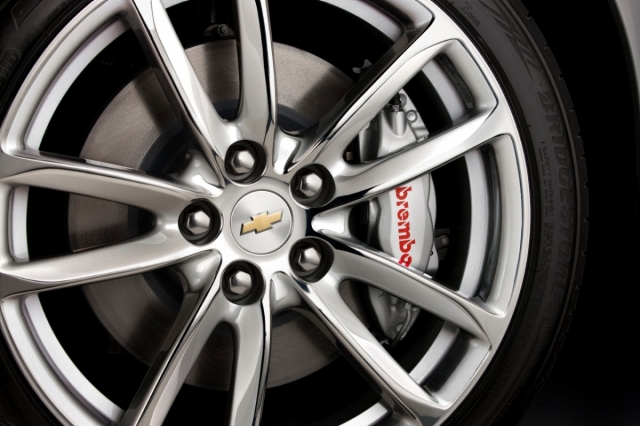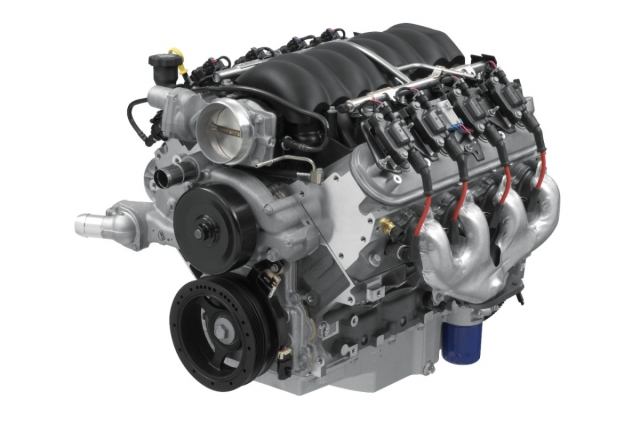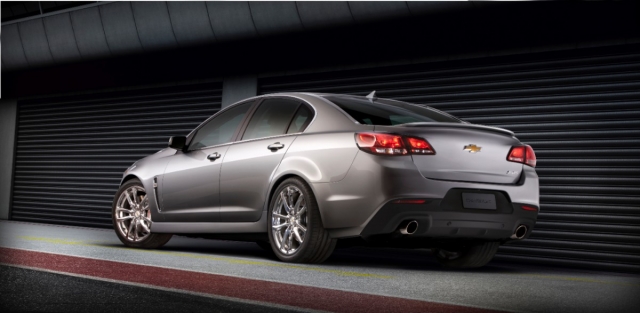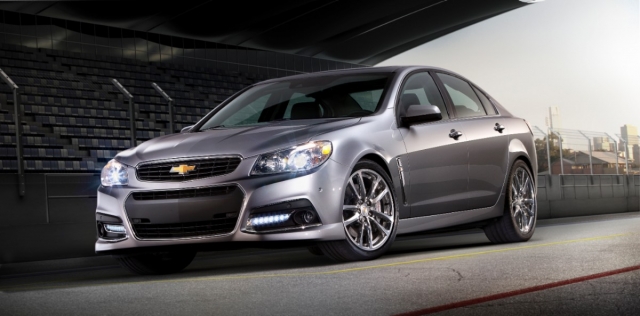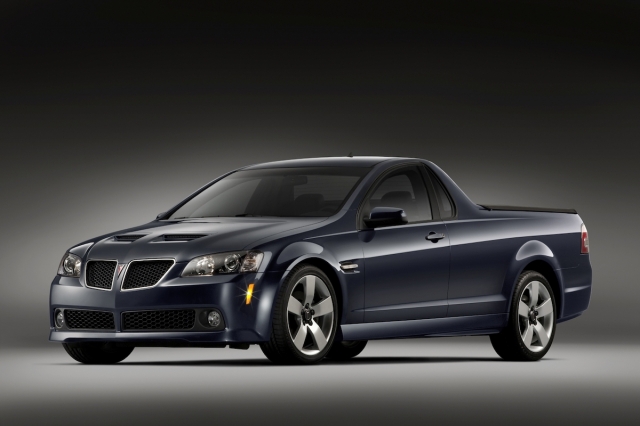Chevrolet is preparing to land the first batch of 2014 SS performance sedans on American soil, after they’ve traveled halfway around the world from their Down Under manufacturing location, in Australia. They will bring a V8-powered, rear-wheel-driven sedan back to Chevy showrooms for the first time since the beloved Impala SS went out of production in 1996.
We’ll give you a moment to pause in contemplative reflection.
The new SS is based on the Holden Commodore, which, along with placing the steering wheel on the correct side of the interior, has been updated to for the American market and aimed squarely at performance enthusiasts (sorry Canada, Chevy ain’t sending it up north). If this all sounds like automotive déjà vu, then you are correct: It’s basically the story of the Pontiac G8, from six years ago – only a few things have changed since then.
If you can remember all the way back to a time when the newbie iPhone had yet to cause so much as a quiver on the lips of BlackBerry execs, the G8 was introduced as a car with plenty of promise, but came saddled with the baggage of General Motor’s looming bankruptcy and the consequential demise of the Pontiac brand all together. The broader problems at GM weren’t the only factors working against the G8 at the time. There were some marketing and product content issues that Pontiac got wrong, which kept performance enthusiasts from lining up with their checkbooks in hand. Part of the problem at the time was the brand itself, but more on that later.
The new Chevrolet SS is based on the Holden Commodre and gets its drivetrain from the Pontiac G8 GXP.
This time around, it appears Chevrolet is poised to succeed with a supremely competent car, but first, here’s a quick reminder of the car’s stats:
- It’s basically the same platform as the Chevy Caprice police vehicle, but with an approximately 4-inch-shorter wheelbase and shorter overall length. Upon closer inspection, the wheelbase and overall length essentially mirror the G8.
- The hood and trunk lid are made of weight-saving, balance-improving aluminum. The car has basically a 50/50 weight balance, now that’s pretty cool.
- The engine is the LS3 rated at 415 horsepower and 415 lb-ft of torque with a 6L80 six-speed automatic as the only transmission offered at this time.
- It has a MacPherson strut front suspension, a multi-link independent rear suspension and electric power steering.
- Brembo front brakes are standard, with ventilated, 14-inch two-piece rotors and four-piston calipers – very nice.
- Nineteen-inch forged aluminum wheels with Bridgestone rubber.
Comparisons between the SS and G8 are inevitable, mostly because, apart from the electric power steering, the SS specs are basically the same as the 2009 G8 GXP, but there are important distinctions that indicate to us it won’t go the way of the star-crossed Pontiac.
The GTO Debacle
It would be pretty easy to write a master’s thesis or build a marketing course around the profound ways Pontiac sullied 40 years of iconic brand equity with the 2004-06 GTO. Equal parts arrogance and ignorance contributed to the debacle, although the original concept of bringing the otherwise fantastic Holden Monaro to the United States was a sound one.
The arrogance came from Pontiac and GM brass, who assumed anything with a V8 engine and rear-wheel-drive would be a no-brainer success if they slapped a GTO badge on it. Ignorance manifested itself in the out-of-touch marketing of the car. Although the car was named GTO, Pontiac took pains to distance it from comparisons and references to the classic musclecar – a pop-culture icon that even non-car people recognized. They also made sure not even the slightest of retro styling cues was woven into the design. Weird, right?
Pontiac was sure people were cross-shopping their G6 with the Audi A6, so logically, the GTO would appeal to younger, Euro-minded customers, right? Yeah… no. They were trolling for customers who didn’t exist. The GTO was too expensive for younger buyers and it didn’t appeal to the Baby Boomers who could afford it – the folks with tenable, emotional connections to the original GTO.
GM was geared up to produce about 18,000 GTOs a year and Pontiac assumed the first model year would be a sell-out. Nope. Only about 13,500 were sold. In comparison, Ford sold more than 160,000 copies of the unabashedly retro 2005 Mustang. The fifth-generation Camaro – based on the same platform as the G8 – has even outsold the Mustang for the last few years, proving the retro trend wasn’t a fluke. Customers were clamoring for it and Pontiac simply ignored it.
The bad mojo rub-off on the G8, which came along two years after the GTO departed, was inevitable and inescapable. Pontiac was out of touch and even performance customers with few other choices for an American rear-drive sedan stayed away. Fortunately, Chevrolet is not Pontiac. Yes, they’ve made missteps with their performance cars and branding in years past – the less said about the SSR and the Malibu MAXX SS the better – but from the C6 Corvette Z06 to the Camaro ZL1 they have a strong track record of delivering on performance expectations and have clearly regained consumer confidence in the performance markets.
To put it simply: Chevy has the benefit of the doubt with the SS. Pontiac just didn’t have that luxury with the G8.
The Power To Perform
The Pontiac G8 was by no means a slouch at its debut, but it didn’t exactly set the drag strip on fire, either. With 361 horsepower from the 6.0L V8 in the G8 GT, Car and Driver was able to nail down a 5.3-second 0-60 time and a 13.8-second quarter-mile ET. Like we said, not bad, but even six years ago, it wasn’t anything to write home about.
For a few more dollars, the 2009 GXP delivered an LS3 6.2L V8 nestled in a package that tipped the scale at just under 4,000 pounds. The larger, more powerful engine provided enough extra thrust to push the car to 60 mph in 4.7 seconds and down the quarter-mile in 13.3 seconds – again, according to Car and Driver’s actual testing.
The GXP’s performance was undeniably stout, but it hit the showrooms just as Pontiac was turning out the lights, so few got to experience its awesomeness. Only 1,829 were sold.
Although we’ve pointed out the new Chevy SS is no G8, we’ll have to walk back that statement a few steps when the hoods of both are raised. The SS sports the same LS3 engine as the G8 and it’s rated at – surprise, surprise – 415 horsepower and 415 lb-ft of torque. Chevy lists the curb weight of the SS at 3,975 pounds, or just less than 4,000 pounds.
Here’s the thing about that: It doesn’t matter. The LS3 is a wonderful, deep-breathing and high-revving power plant. What it may lack in sheer, low-rpm torque it more than makes up for in high-winding performance that’s oh-so-satisfying when driving in the engine’s mid and upper ranges. It’s an asset in the SS, shared with the Camaro SS.
We’ll argue the TREMEC six-speed manual transmission offered in the GXP gave the car an extra dose of street cred, whereas it’s any transmission you want in the SS, as long as it’s an automatic. Yes, we know manual-transmission take rates by customers continue to slide, even in hardcore sports cars, but even still, there’s just something a little less sporting about a car named SS without a manual – just sayin’ – but maybe we’ll see those options expand down the line.
Another attribute the G8 GXP and SS share is Gas Guzzler tax-inducing fuel economy. The Pontiac was rated at 13 city and 20 highway, while the SS, with the same engine and a nearly identical curb weight, eeks out EPA estimates of 14 city and 21 highway – numbers that could add approximately $1,000 to the $44,470 sticker price.
In the automatic-equipped Camaro SS, which has a comparable curb weight to the SS sedan, cylinder deactivation technology contributes to a 24-mpg highway rating. It also contributes to a 26-horsepower decrease in horsepower, so there’s the trade-off. Fuel economy in a car like the SS is not the end of the world – and we’d certainly rather have the extra 26 horses – but it’s certainly a factor when gas prices creep up and over the $4.00/gallon mark during those peak months of the year.
Technology Triumphs And Packaging Perfection
GM went to considerable lengths to Americanize the Australian Holden Commodore and turn it into the G8. There were safety features and other federal requirements to incorporate and some suspension and noise/vibration/harshness items to address, too, but the General didn’t quite follow through on some of the technologies and creature comforts that customers we coming to expect – especially in the G8’s price range. On the 2008 model, for example, you couldn’t even get satellite radio, which was standard on the lowly Cobalt clone known as the Pontiac G5 – and it even offered a USB port for plug-in media sources. Satellite radio was added to the G8 for 2009, but there was definitely a continental disconnection.
That’s not the case with the Chevy SS, which comes one way: Loaded. To. The. Gills. Not only is satellite radio part of the package, it’s woven into the standard MyLink system (with a nav system), which is controlled through the eight-inch color touch screen – now we’re talking technology.
A read through Chevy’s list of additional features shows the SS is ready for the American roads and, more importantly, American owners: Color heads-up display, dual-zone climate system, heated/ventilated leather seats, keyless access with push-button starting and, that popular feature in the colder climes: remote start. It even has one of those automatic parking features. Those features are all standard, the only available option is a power sunroof.
Sporty and race inspired, the SS really outshines its predecessors.
There’s also no mistaking the cabin of the SS for a re-badged Poncho, either. The instrument panel has that classic Chevrolet dual-binnacle styling and the flat-bottom steering sure looks racy. There’s also unmistakable and much-appreciated attention to detail in the trim and feel of the materials. The G8 was old-school, hard-plastic GM – definitely not befitting its price point, while the SS simply looks and feels elegant, yet still appealing in the performance markets.
The Cool Factor
This circles back to point #1: Chevrolet is on a roll these days. Pontiac was the walking – rolling? – dead when the G8 had hit the streets.
The car-buying public had moved on from Pontiac and so, too, had enthusiasts. We suppose this is the point in the story where you GTO and G8 cultists start flaming us with vitriolic counterpoints, but keep this in mind: We haven’t criticized the driving experience or specs of either car – we’ve simply pointed out they were wasted by misdirected marketing. The G8 – particularly the GXP – was a fun, mostly well-executed car, but partnering it with the Pontiac brand was surely a mistake. It should have been a Chevy all along. Heck, remember they were going to offer a neo-El Camino version, too? If anything should have worn the bowtie, it should have been that thing!
Here we are six years after the G8’s launch and five years after its demise. Today it’s clearly a new GM and in many respects, a new Chevrolet. Forget that the SS’s powertrain and chassis specs are largely the same as the G8 GXP. It doesn’t really matter, because the whole of the SS is more than the sum of its parts. The 1994-96 Impala SS taught us that. It was based on the bloated-looking, anemic Caprice, but with its sinister-looking black paint job, police car underpinnings and aluminum wheels, an entirely new persona was cultivated – one that instantly changed perceptions.
So, maybe it’s not so much a G8 comparison we should consider, but whether the SS is worthy to roll in the tire tracks of a car that became an instant icon. On paper and on the street, the new SS runs rings around the old Impala SS, but – duh! Everyone expects that 18 years later, but its presence and coolness will be judged by intangible factors.
For the record, we think it’s a worthy successor in every right, but then again, we’d only order ours in black.







